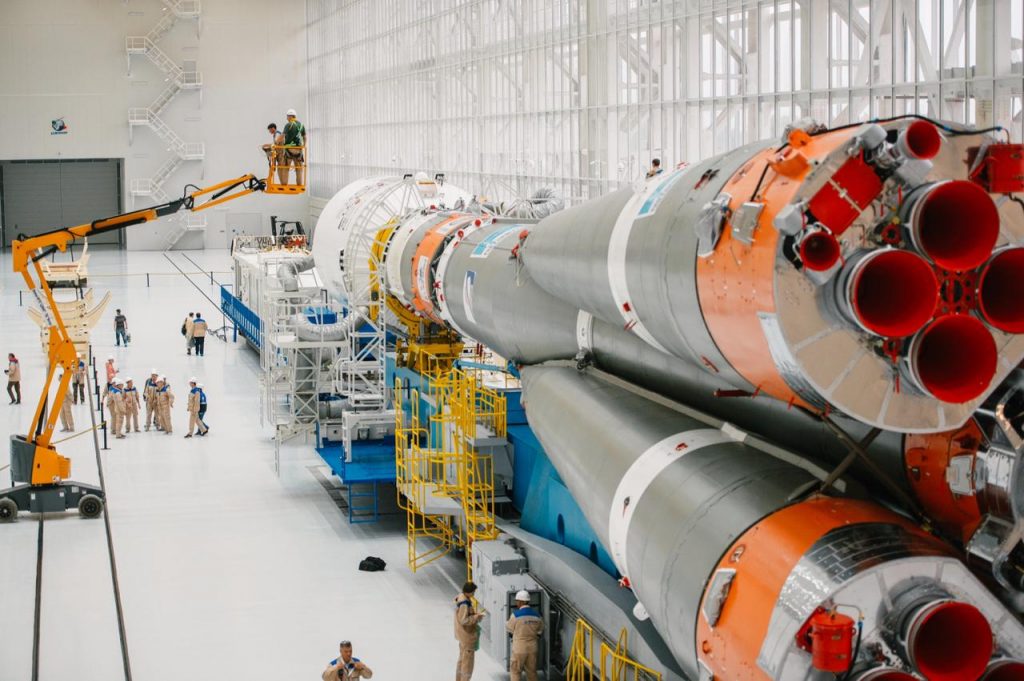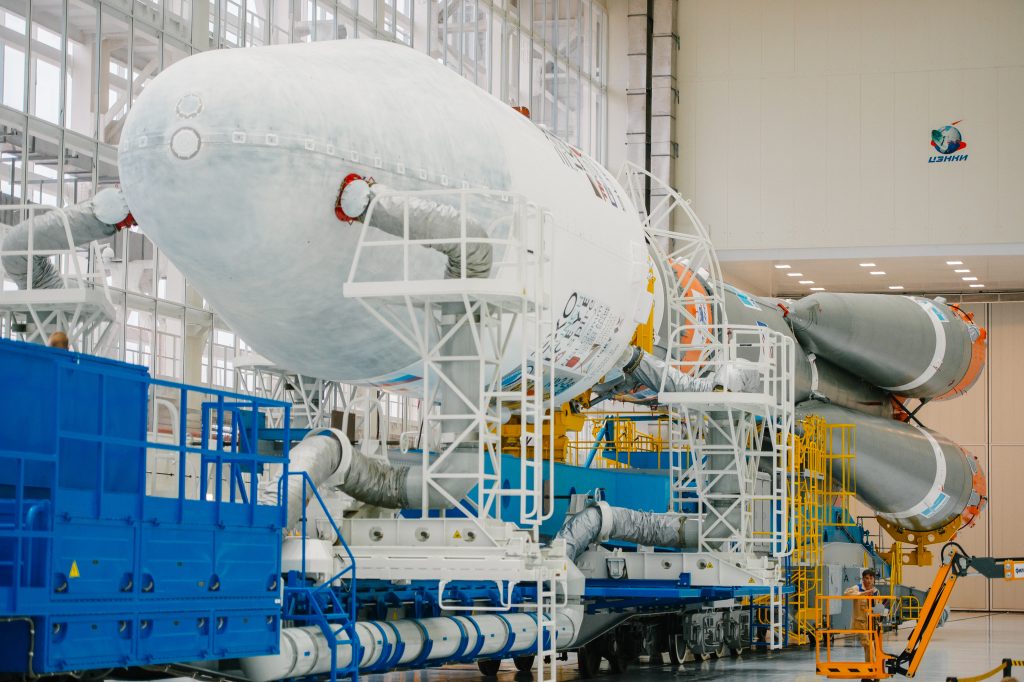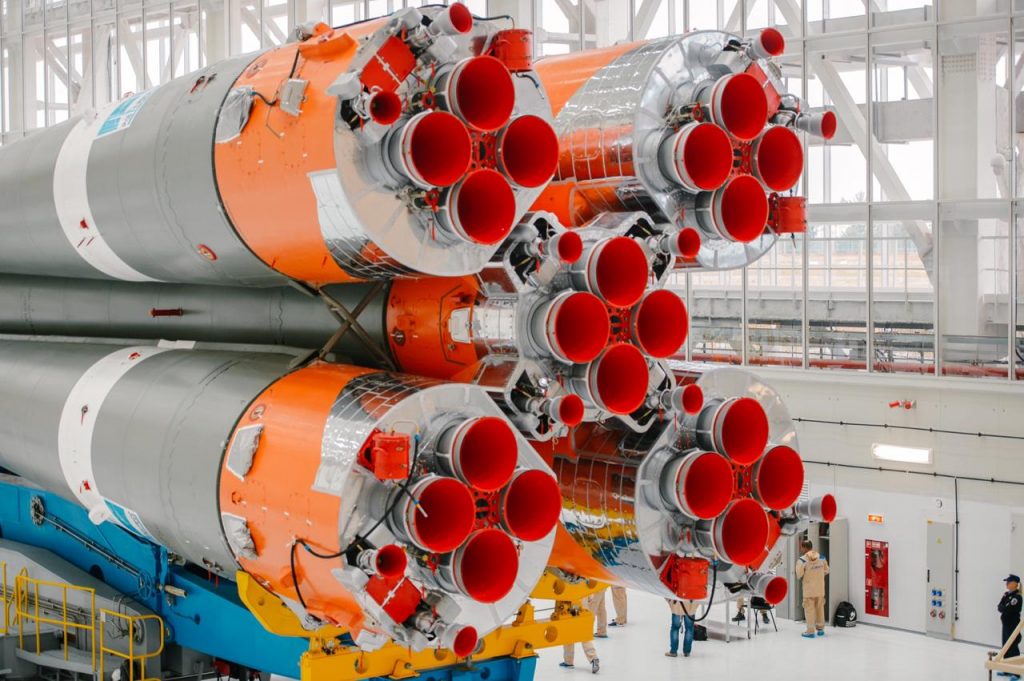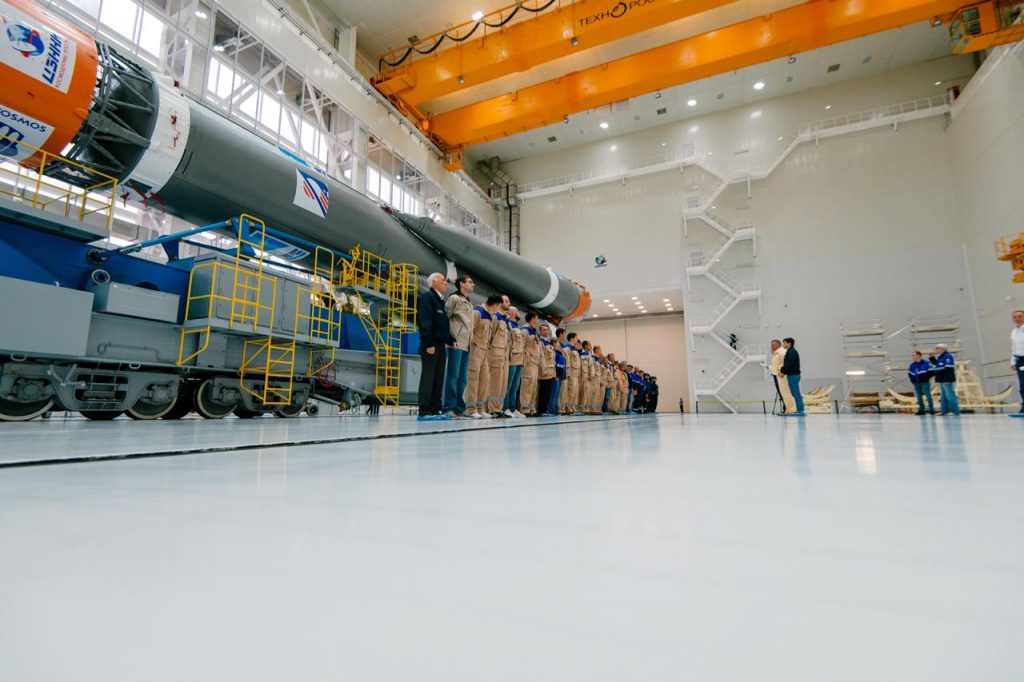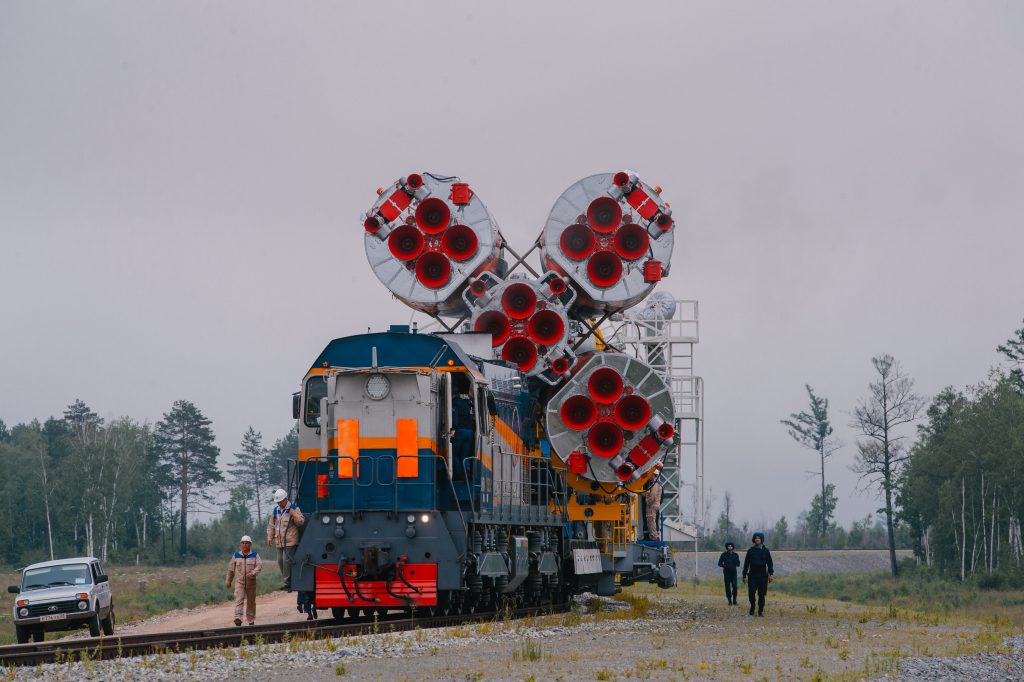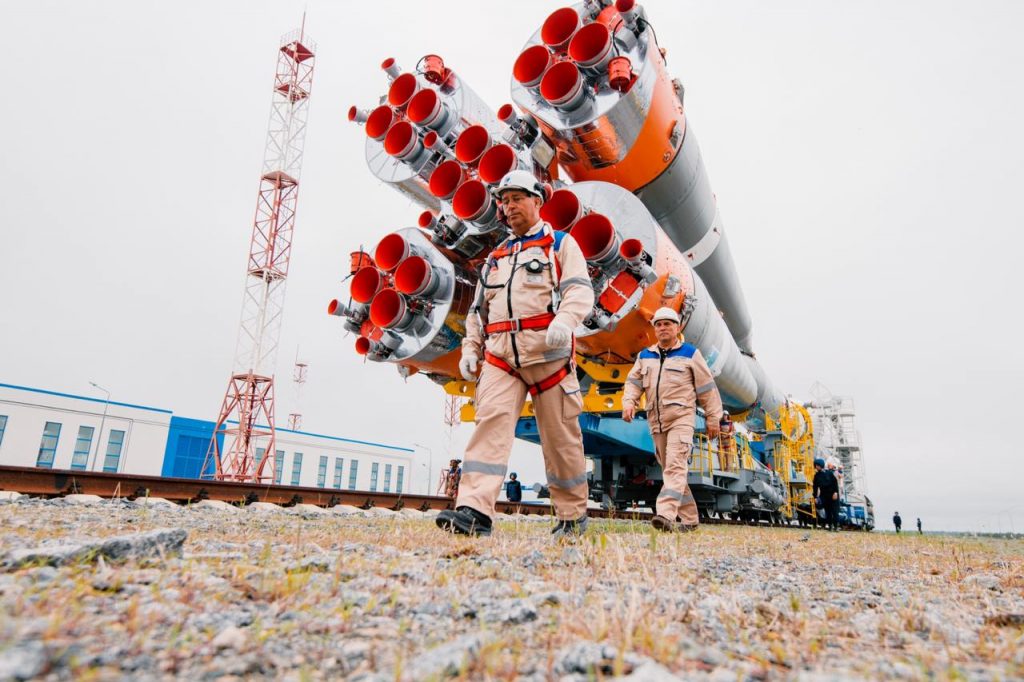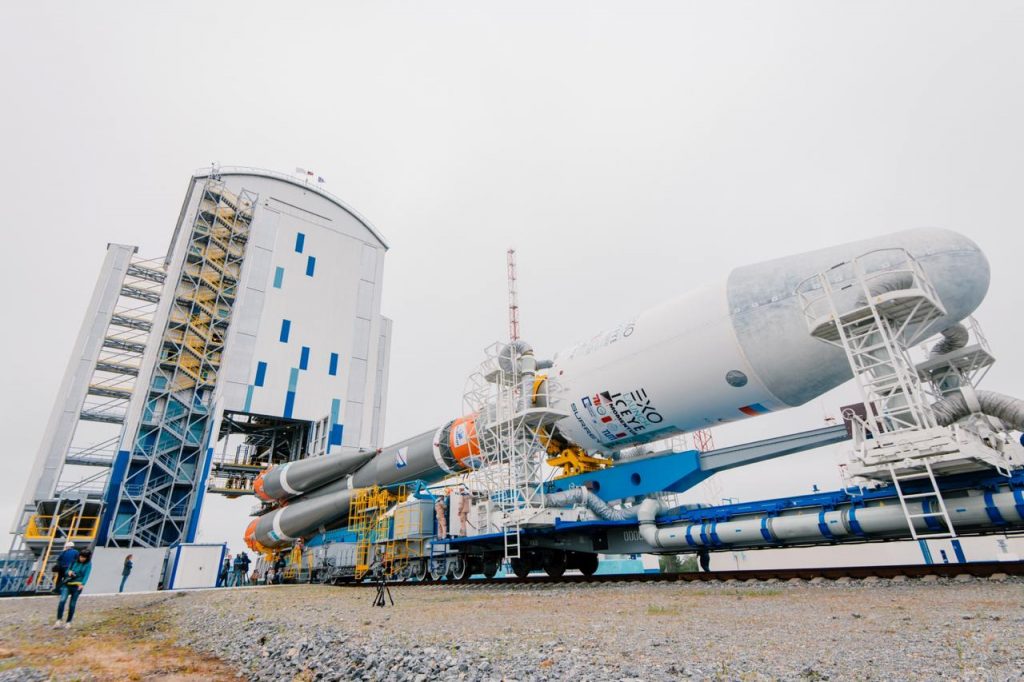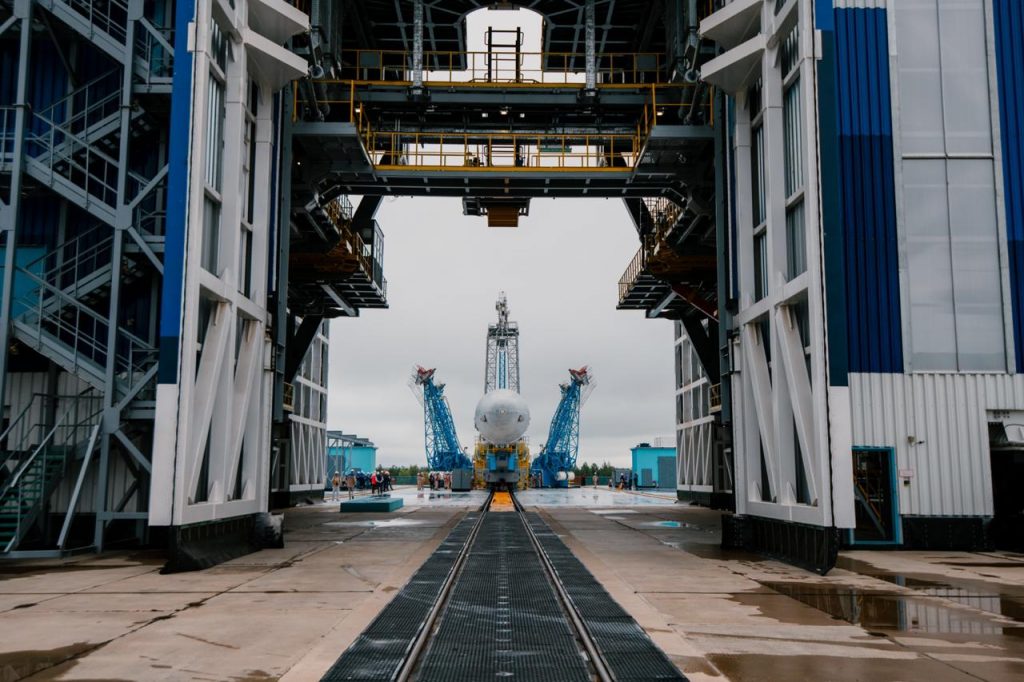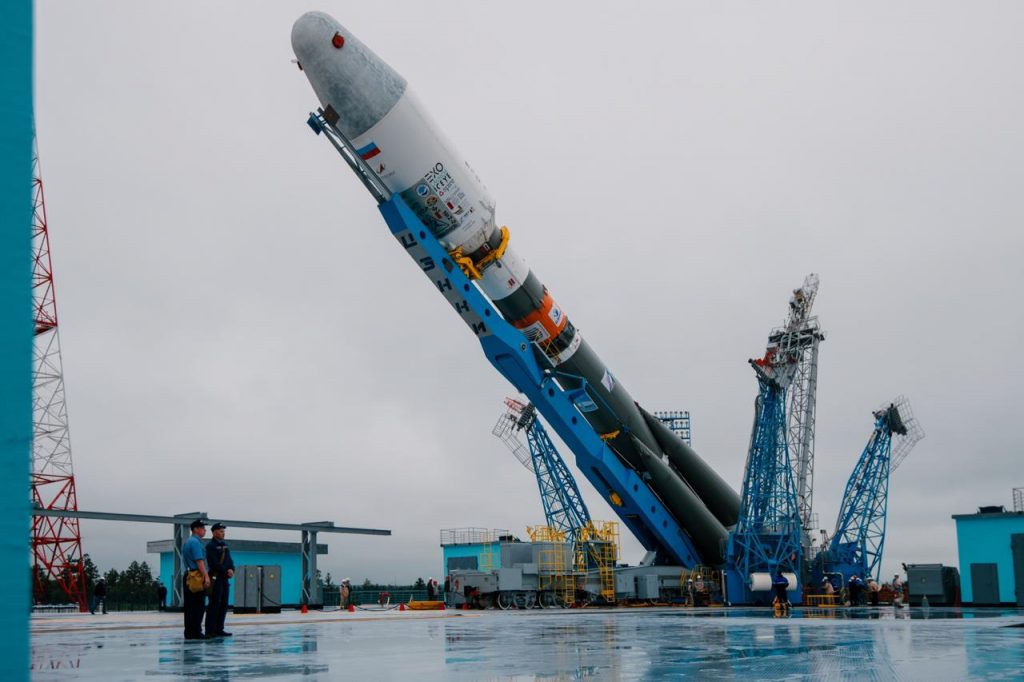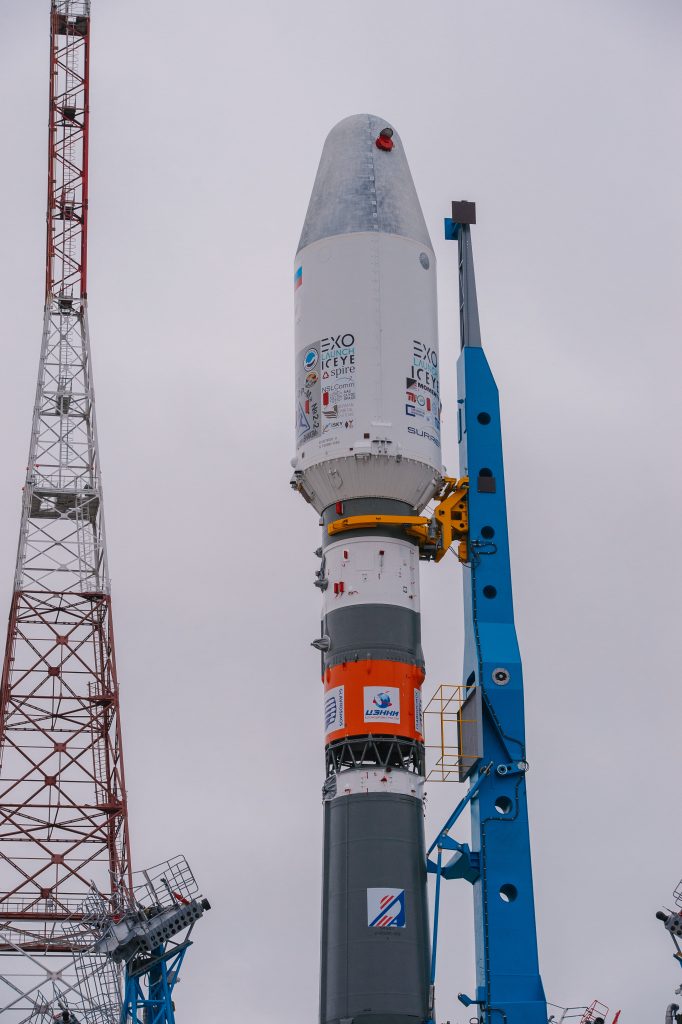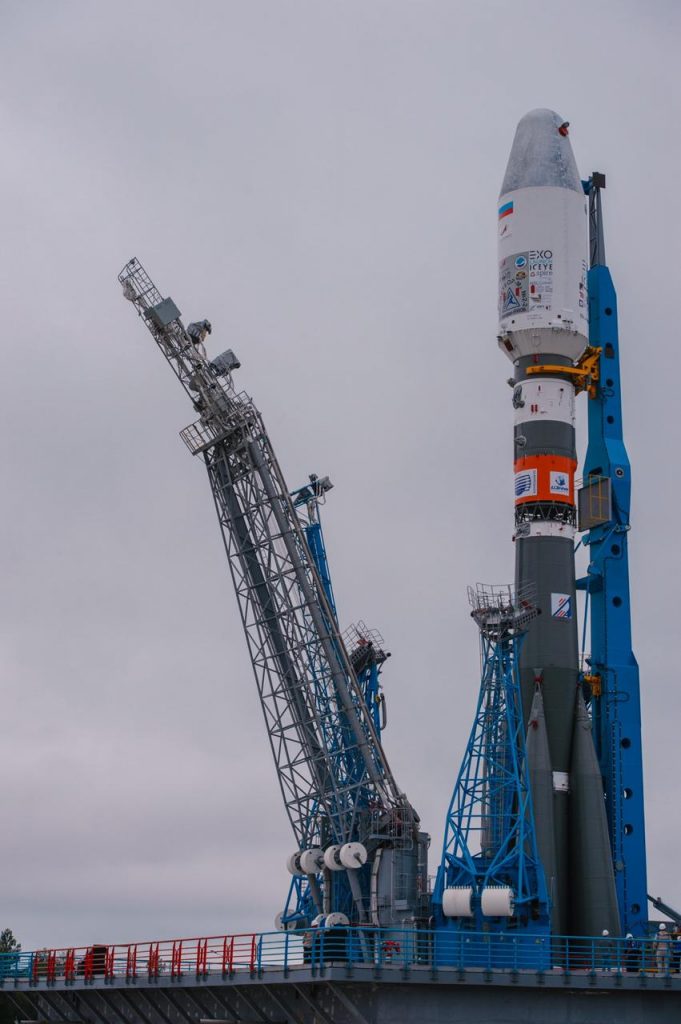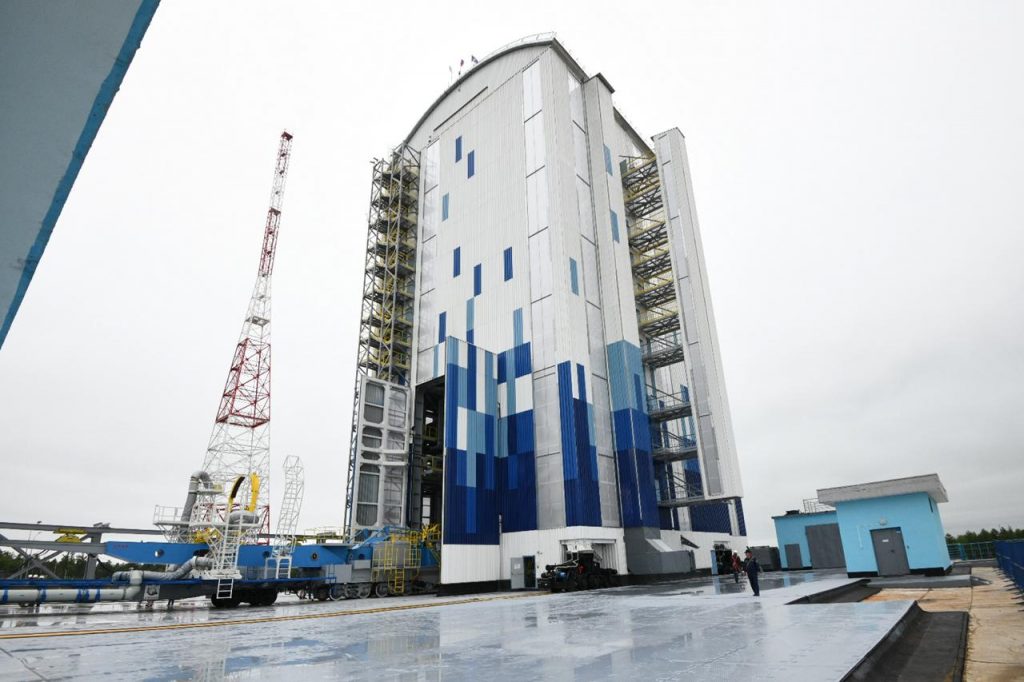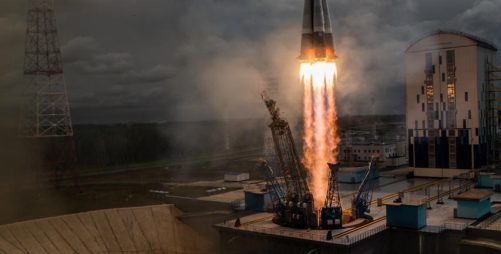THE SOYUZ-2.1B LV WITH THE METEOR-M SATELLITE AND 32 SMALL SATELLITES WAS TRANSPORTED TO THE LAUNCH PAD AT THE VOSTOCHNY COSMODROME.
The Soyuz-2.1b launch vehicle with the Meteor-M meteorological satellite and 32 small satellites was transported to the Launch Pad at the Vostochny Cosmodrome on July 2, 2019.
Before transportation to the Launch Complex, the Space Head Module (composed of the Fregat Upper Stage, spacecraft and the head fairing) is already integrated with the Launch Vehicle, and a thermal cover is installed on the fairing.
The thermal control unit feeding the air with required parameters inside the fairing via air-ducts provides the temperature and humidity environments adequate for a comfortable stay of spacecraft in there.
Traditionally, before moving a rocket to the Launch Complex, the personnel involved in the operation line up and are briefed on the transportation tasks.
The LV is transported to the Launch Pad by railway. The train includes a locomotive, a mobile thermal control unit, a buffer, and a transporter-erector with an LV on it.
The distance between the LV AITB to the Launch table is 4.5 km. The duration of the LV transportation is about an hour.
The LV is transported to the Launch Pad with the speed of 5 km/h. Thus, the transportation is monitored and secured all the way by the escort team walking along from AITB to the Launch Pad.
Near the Launch Pad, the locomotive performs a switching maneuver and couples with the tail end of the train. From now on, it does not pull but pushes the train with the LV to the launch table.
While rolling the LV to the launch table, it goes through the Mobile Gantry which is in its initial position. When the LV is erected on the launch table, the Gantry (52 m high, 15 levels) is rolled over the launch table, and thus, the LV is inside the Mobile Gantry. The design of the Gantry provides access to all required operational points on the LV and SHM and supports pre-launch processing even in the most severe weather conditions.
Up to lift-off, the LV is held by support frames. In case of strong wind gusts, the frames together with supply masts stabilize the balance of the rocket. During LV lift-off, the holding structures of the frames detach from the rocket and move aside under the effect of counter-weights to their initial state.
When rolled over the table, the LV is put vertical and then installed onto the table by the erector’s mast.
The operations of putting the LV into a vertical position and LV installation onto the launch table last about half an hour.
As soon as the LV is fixed on the launch table, the transporter-erector is removed from the Launch Pad and the Mobile Gantry is rolled over the table with the LV on it, the gates of the Gantry are then closed. During three days before launch, the LV is inside the Gantry, and there, the crews carry out pre-launch operations: electrical check-outs of onboard systems of LV, Upper Stage, satellites, and LV fueling.
The launch of Soyuz-2.1b LV is scheduled for July 5 at 08:41:46 Moscow time.
In total, 29 satellites will be launched in the interest of Germany, France, USA, Israel, Great Britain, Sweden, Finland, Thailand, Ecuador, Czech Republic and Estonia.
Besides, within the framework of the Roscosmos State Corporation’s program for the development and launch of small satellites built by Russian universities, along with the Meteor-M 2-2, the carrier rocket will orbit three Russian research and educational CubeSats – Socrat, AmurSat and VDNH-80.
GK Launch Services, a subsidiary of Glavkosmos, is an operator of commercial launches. The company was established by the decision of Roscosmos and is authorized to conclude and implement commercial contracts for the launch of spacecraft using Soyuz-2 family launch vehicles from the Russian launch sites.
Glavkosmos is a subsidiary of Roscosmos State Space Corporation. The main mission of the company is promotion of the achievements of the Russian space industry to the world market and managing complex international projects. For more than thirty-year history of the company over 120 international contracts have been successfully fulfilled, including orbiting of more than 90 satellites as secondary payload.
ROSCOSMOS is a State Corporation established in August 2015 to oversee and implement a comprehensive reform of the Russian space industry. ROSCOSMOS ensures the implementation of the Russian government’s space program and its legal regulation. ROSCOSMOS also places orders for the development, manufacture and supply of space equipment and space infrastructure facilities. The state corporation is responsible for international space cooperation and tasked with setting the stage for the further application of space activities outputs in the social and economic development of Russia.
#GKlaunch #Soyuz

